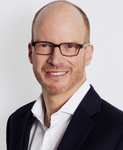A Managed Futures ETF Shined Through the Gloom in 2022



Andrew Beer, founder of Dynamic Beta Investments, is one of the managers of the $895.5 million iMGP DBi Managed Futures Strategy ETF (DBMF), which was up 21.5% last year when U.S. markets were
down almost as much. Beer recently chatted with ETF.com about what his fund offers investors and what makes it tick.
ETF.com: DBMF was one of the top-performing ETFs last year. What drove that performance?
Andrew Beer: What we do is different from what most people do. Most people you talk to, who have a hedge-fundlike strategy, will tell you, “Our hedge fund strategy is the best; we're the smartest at what we do, etc.”
Ours is very different, and we think there are a lot of really smart hedge funds who do this. But what we're better off doing is figuring out what they're doing and copying it cheaply.
There are 20 hedge funds that we track. Our thesis is that managed futures as a strategy is the single most valuable thing you can put next to a 60/40 portfolio. The problem is there are all sorts of issues in terms of investing in it, and it has been slim pickings in the ETF world for a long time.
What the hedge funds that we track picked up on early—they got the inflation trade early. And they rode it. It was being long crude oil at the right time, being short Treasuries for most of the year, and making money when rates were rising. It was being short the yen when the dollar kept going up. It was a handful of big trades.
ETF.com: Who is investing in DBMF?
Beer: There are a lot of advisors out there who like managed futures in theory but had a lousy experience investing in it.
The reasons are usually one of two things. One is they picked a guy who they thought was great at the time, and then did terribly—single-manager risk, we call it.
The other is that they were trying to hold it through a four- or five-year period when the strategy made zero, net of fees.
In 2015, we set out to solve both those problems. In the last year, the vast majority of our growth was from independent RIAs. It was guys who liked the strategy and could see the diversification benefits, but thought we had, in a sense, built a portfolio and an ETF with their concerns in mind.
The early adopters of the product were all these independent RIAs. So we go from $60 million [and] we're at $900 million right now. But I don't think it's even begun, because the managed futures ETF world is $1.6 billion to $1.7 billion. The mutual fund equivalents are $25 billion, and the hedge funds are $400 billion.
I think what happened is after 2022, we're at this inflection point where managed futures really starts to go mainstream in the ETF world.
Fifteen years after the first hedge fund products were introduced in ETFs, I think this is the first ETF where you can say this is a hedge fund strategy in an ETF that does better than actual hedge funds, and does better than mutual funds.
ETF.com: How is DBMF managed?
Andrew Beer: [We track] the 20 largest funds in the space. It's a little bit like the S&P 500 of managed futures. We weren't trying to pick which one was going to do the best, because that's a fool's errand.
Literally nobody on planet Earth has figured out which one is going to do well. Rather, we said, “The average is great!” We think we can do even better than the average if we cut out fees and expenses.
We have a risk model, and the sole purpose of the risk model is to figure out what those guys are doing. Imitation is the greatest form of flattery. It's not perfect—we don't know, to the specific number of contracts, but it gives us a very good read.
We ended up with about a 90% correlation to what they do, but because we cut out so much in fees and expenses, we've been doing about 400 basis points better than the average. That's a lot.
ETF.com: How should investors view this product?
Andrew Beer: Here's a strategy where you can say it has more diversification value than anything else. The key to the strategy is that it should be a strategic long-term investment.
You have these periods where you have these great gains. And then you have lower return periods. And then you have a little bit of between. Everybody says, “I'll figure out how to buy it just for those high return periods.” And no one knows how to do that.
My job this year is to do a lot of education work and experiment and talk to people about how to make this allocation as stress free as possible for people.
Some people have asked me what is the emotional response that I'm most happy when I see it on the other side of the table. For the guys who bought the fund last year, it was relief. They see the strategy [and] they want it, because it's so clearly valuable.
But where are the landmines and how do they avoid stepping on them? [But] they're talking to a guy who's spent years trying to figure out how to detect and remove landmines from the strategy.
If you create it the right way, it opens up a possibility where they can make this a 5% or 10% allocation in their portfolio and still have it in 10 years [without] having it be one of these allocations where every year you're trying to figure out what to do with it.
Contact Heather Bell at heather.bell@etf.com
Recommended Stories
